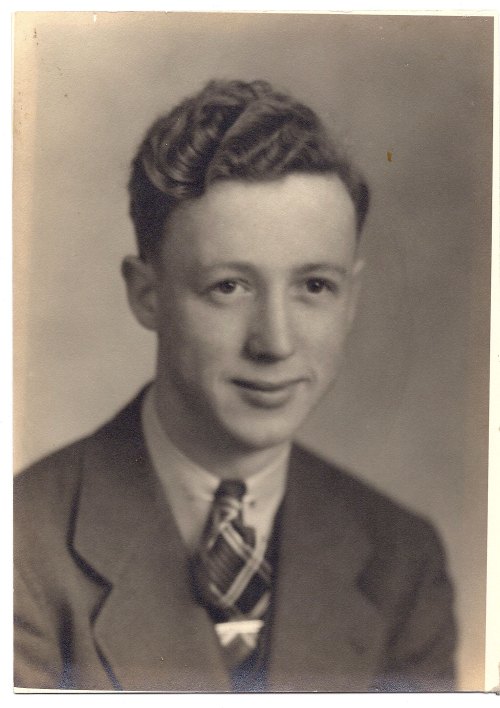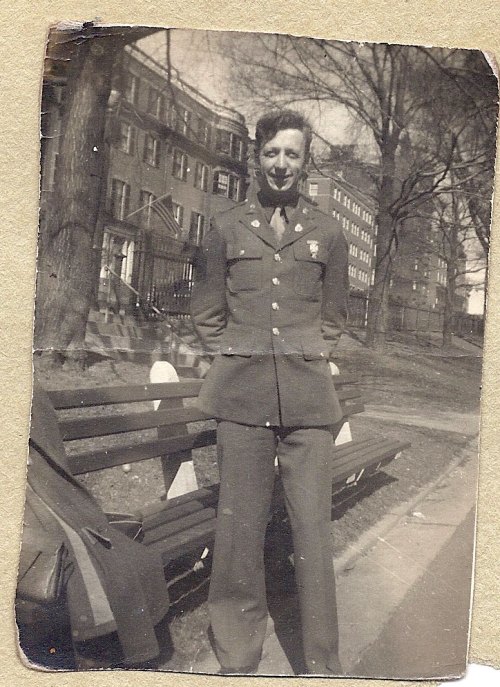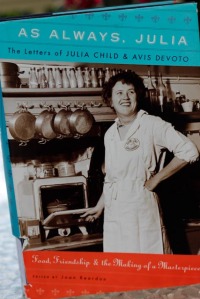My dad, Cecil D. Clark, was born on this day in 1920. His November birthday was linked permanently with our family’s Thanksgiving celebration. In some years these events coincided date-wise, however whether they did or not, dad’s birthday was always celebrated on Thanksgiving Day. It’s been more than sixteen years since dad’s been gone. And yet, whenever Thanksgiving comes around, he’s in my thoughts.
This year when I reflected on the years we spent together, I couldn’t help feeling sad that I did not have more time with him. I knew him for only 50 years, beginning in 1946, the year I was born. Most of that time, I was too focused on myself to have learned much about him. That’s why I’m grateful he wrote “The Life History of Cecil Clark”, even if he only completed the first chapter.
In these 43 pages, he recalled his life from his earliest memory of attending Kindergarten in Watertown, South Dakota and concluding with my birth in July 1946. Between those two events, he graduated high school, joined the army, fell in love and married, fought in WW II, returned home to his wife and first baby and began civilian life in Boston, Massachusetts. Without his written account, I don’t know how I would have discovered these details.
When we gathered for Thanksgiving last week, my sister Jean, shared photos and other memorabilia about our dad. This material provided additional insight about his boyhood and early adult years. I discovered my father’s persistent passion for cooking, baking and food preparation. I always knew he was comfortable in the kitchen, but what I learned is his passion for food emerged at a young age and continued throughout his life.
- My dad worked evenings in his parent’s restaurant in Richardton, North Dakota in 1936.
- In 1941, my dad joined the United States Army and trained as a cook. He wrote, “I continued to cook all summer 1941, and thoroughly enjoyed it.”
- He became the mess sergeant of the battalion and “was to order or purchase the foods, prepare the menus and supervise the preparation of the meals, along with seeing to the cleanliness of the kitchen and the mess hall.”
- He met my mother in Springfield, Massachusetts and wrote, “…we usually went out for something to eat … and sometimes to the Waldorf Cafeteria for English muffins and coffee.”
- Returning from WW II in Europe, my dad enrolled at Northeastern University as a college student. To support his family, he worked as a pastry chef from 6 p.m. to midnight. He “found a job …with a restaurant chain …working in their bakery .. rolled out pie crusts, filled the pie shells, baked them. Mixed the cake batter, made the puddings.”
- When I was a girl, dad cooked up his signature dish (and one of my favorites) “Onion Gush Gush” – basically scrambled eggs with chopped onion cooked in lots of butter.
- On weekends, mom and dad made English muffins and deep-fried donuts.
- Fresh fruit and vegetables thrived in our backyard garden.
- Dad was an adventurous eater. On a three hour layover in Chicago in the late 50’s when we (dad, mom and their five daughters) traveled by train from Tacoma to Boston, Dad hailed a Checker Cab. We went to a downtown restaurant for a quick lunch. Dad ordered turtle soup.
Now that I think about it, Thanksgiving is the perfect time to celebrate Cecil. And although, I don’t think he ever cooked with lavender, I know he’d be proud that I’ve carried on his passion for food, flavor and cooking.









